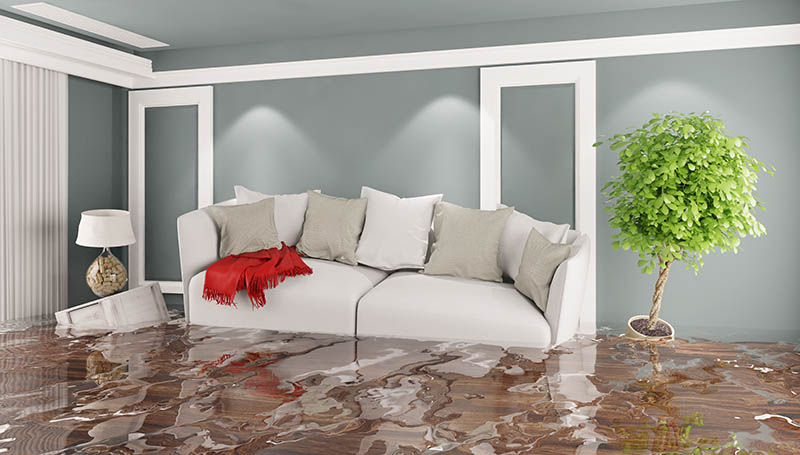Learn About Half a Dozen Principal Factors For Water Seepage in Your House
Learn About Half a Dozen Principal Factors For Water Seepage in Your House
Blog Article
We've uncovered this post relating to Common Water Leaks In House down the page on the web and decided it made good sense to discuss it with you on my blog.

Leaks not only cause waste of water but can additionally trigger unneeded damage to your residence and also advertise unwanted natural growth. Water leakages could go undetected because most of the pipework in our residence is concealed. By recognizing and also looking for everyday circumstances that cause leakages, you can secure your residence from future leaks and unneeded damage. Today, we will check out six leakage triggers that may be creating your pipes to drip.
Intruding roots
The majority of water leaks begin outside the house instead than inside it. You may discover damp patches or sinkholes in your lawn, as well as that may indicate that tree origins are invading water lines creating water to permeate out.
Rusty water supply
This might be the reason of staining or warping on your water pipes. If our plumbing system is old, think about changing the pipelines because they are at a greater danger of deterioration than the newer designs.
Malfunctioning Pipeline Joints
The point at which your pipes attach is frequently the weakest link in the waterline. Pipeline joints can deteriorate in time, leading to water leakages. Unfortunately, the majority of pipe joints are not easily noticeable. If you have loud pipes that make ticking or banging noises, particularly when the hot water is turned on, your pipeline joints are possibly under a lot of pressure. It is recommended to have your plumber examine your system yearly.
Instant temperature level changes.
Extreme temperature level modifications in our pipelines can trigger them to broaden and get all of a sudden. This growth and tightening may create fractures in the pipes, specifically if the temperature are listed below freezing.
Poor Water Connectors
Sometimes, a leak can be brought on by loose tubes and pipelines that provide your home appliances. Generally, changing is what causes the loose water Links. You could discover in the case of a washing device, a tube may spring a leakage due to trembling throughout the spin cycle. In case of a water links leak, you may observe water running directly from the supply line or pools around your appliances.
Obstructed Drains
Blocked drains may be aggravating and inconveniencing, however they can in some cases end up causing an overflow resulting in rupture pipelines. Maintain removing any products that might decrease your drains pipes that might block them to avoid such inconveniences.
All the above are reasons for leaks but not all water leakages arise from plumbing leakages; some leaks may originate from roof leaks. All leakages should be repaired quickly to prevent water damage.
Leakages not only cause waste of water yet can additionally create unnecessary damages to your home and promote undesirable organic development. By comprehending and looking for day-to-day circumstances that create leaks, you can safeguard your house from future leaks and also unnecessary damages. Today, we will certainly look at 6 leak causes that might be creating your pipelines to leak.
At times, a leakage can be triggered by loose hose pipes and also pipes that supply your devices. In situation of a water links leak, you may see water running straight from the supply line or pools around your devices.
How To Check For Water Leak In Your Home
How To Check for Leaks
The average household's leaks can account for nearly 10,000 gallons of water wasted every year and ten percent of homes have leaks that waste 90 gallons or more per day. Common types of leaks found in the home are worn toilet flappers, dripping faucets, and other leaking valves. These types of leaks are often easy to fix, requiring only a few tools and hardware that can pay for themselves in water savings. Fixing easily corrected household water leaks can save homeowners about 10 percent on their water bills.
To check for leaks in your home, you first need to determine whether you're wasting water and then identify the source of the leak. Here are some tips for finding leaks:
Take a look at your water usage during a colder month, such as January or February. If a family of four exceeds 12,000 gallons per month, there are serious leaks.
Check your water meter before and after a two-hour period when no water is being used. If the meter changes at all, you probably have a leak.
Identify toilet leaks by placing a drop of food coloring in the toilet tank. If any color shows up in the bowl after 10 minutes, you have a leak. (Be sure to flush immediately after the experiment to avoid staining the tank.)
Examine faucet gaskets and pipe fittings for any water on the outside of the pipe to check for surface leaks.
Undetected water leaks can happen without the home or business owner even realizing. If you suspect a water leak, but not able to find the source. It is time to contact a professional water leak detection service, The Leak Doctor.
How To Find a Water Leak In Your Home
https://www.leakdoctor.com/blog/How-To-Check-For-Water-Leak-In-Your-Home_AE197.html

I found that write up about How to Find Water Leaks when looking around the web. Sharing is good. You just don't know, you may very well be helping someone out. Thank you for going through it.
Plumbing SOS? Dial! Report this page